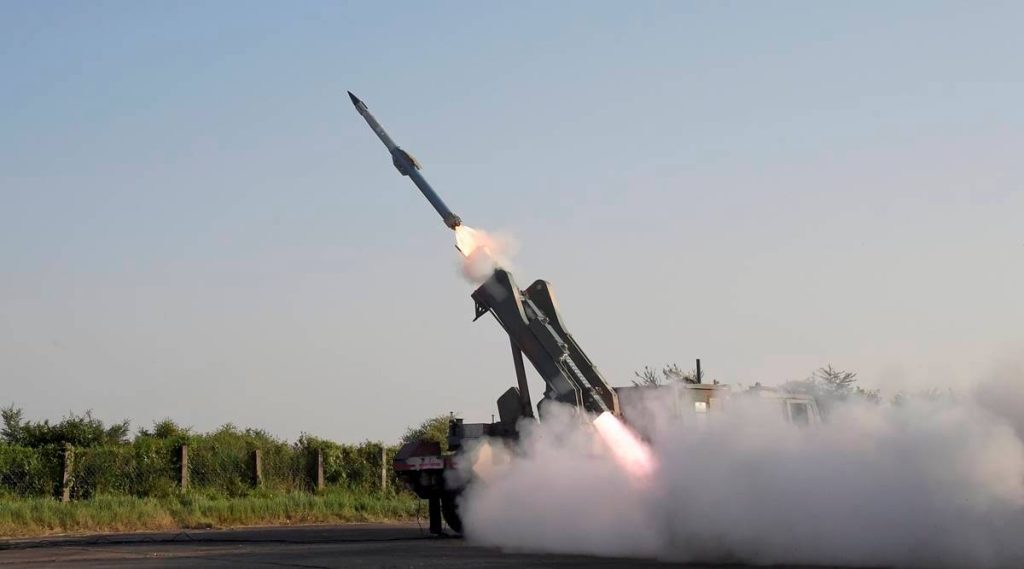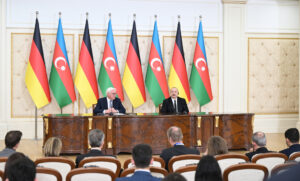Indian Military Exports: Driven by Hatred
In September, Armenia ordered heavy weapons from India worth at an estimated cost of $245 million with the Indian manufactured Pinaka multi-barrel rocket launchers as the centerpiece alongside anti-tank rockets and a range of ammunition.Indian firm Kalyani Strategic Systems Limited (KSSL) confirmed obtaining an export order worth $155.5 million from Armenia for its 155mm artillery gun platform

Recently, a closeness of relations has been observed between India and Armenia with the Secretary of the Armenian Security Council making rounds of New Delhi. Before that there were two major defense exports from India signed with Armenia as a major development. In September, Armenia ordered heavy weapons from India worth at an estimated cost of $245 million with the Indian manufactured Pinaka multi-barrel rocket launchers as the centerpiece alongside anti-tank rockets and a range of ammunition. Whereas, in November, Indian firm Kalyani Strategic Systems Limited (KSSL) confirmed obtaining an export order worth $155.5 million from Armenia for its 155mm artillery gun platform. These two orders prompted the Indian outlets to start boasting about Indian exports.
Armenia has acquired Indian defense equipment before as well. When the 2020 Nagorno-Karabakh war was raging, India supplied four Swathi radars to Armenia. This system was supposed to provide fast, automatic and accurate location of enemy weapons like mortars, shells and rockets in its 50 kilometer range. However, one must take into consideration that Armenia’s imports from India are more of a lack of options than any edge Indian defense equipment has Armenia is a landlocked nation that is still afflicted economically by the collapse of the USSR resulting in limited resources to spend on military equipment or develop a sufficient military infrastructural base.
Hardly a day goes by in which Muslims (or other minorities for that matter) are not reported to have been subjected to one atrocity or the other at the hands of either the Indian state or state backed Hindutva groups
It is most probably for this reason that has propelled Yerevan to knock at doors of dubious suppliers such as India whose defense equipment doesn’t enjoy the best reputation. Its main service rifle, the INSAS is lambasted as being one of the worst firearms to have been made and among other things is infamous for squirting oil in the eyes of its user during firing. Its low quality caused Indian troops to disdain the rifle and in 2011, the Indian armed forces shunned its maker, the state owned DRDO, settling on foreign rifles. Despite these shortcomings, it was exported to the Indian client Kingdom of Nepal where it lived up to its notoriety. Its low quality led to a row between the two nations over charges that the INSAS rifles repeatedly malfunctioned, resulting in heavy casualties in fire-fights with Maoist rebels such as during the August 2005 battle at Pili in Kalikot district, 600km west of the capital Kathmandu.
Another of India’s much touted exports were the Dhruv helicopters from Hindustan Aeronautics Limited or HAL to Ecuador. In the end, after six Dhruv helicopters crashed one after another, Ecuador cancelled the contract, grounded the helicopter fleet and said its air force was looking for potential buyers for the helicopter. However, it seems Armenian desperation seems to be propelling Armenia into accepting dubious military equipment mainly due to the devastating defeat in the 2020 war against Azerbaijan.
Another factor maybe ideological politics, India is governed by the BJP which is the political wing of the Hindu supremacist RSS and proclaims itself a defender of Hindutva which is a virulent anti-Muslim creed. Hardly a day goes by in which Muslims (or other minorities for that matter) are not reported to have been subjected to one atrocity or the other at the hands of either the Indian state or state backed Hindutva groups. International observers such as Dr Gregory Stanton, the founder of Genocide Watch have repeatedly warned of an impending genocide of Indian Muslims at the hands of the Indian Government.
Armenia is not the only such state to be the recipient of Indian military equipment Myanmar, which has been found complicit in crimes against humanity and genocide against Rohingya Muslims in Rakhine state, was given a 3,000-ton diesel-electric, Kilo class Russian-built submarine by India as “part of military outreach”
Armenia itself has been found guilty of perpetrating a genocide against Muslims when it took over the Nagorno-Karabakh region in the 1990s following the dissolution of the USSR. The Khojaly massacre which saw deaths of upto 613 Azeris including women and children has been defined as an act of revenge by some Armenian personalities. After much of the region was reclaimed by Azerbaijan in the 2020 war, it was found that during its 30 year old occupation, Armenia destroyed 65 out of 67 mosques, while the remaining two mosques were seriously damaged and used to keep pigs and cows.
Armenia is not the only such state to be the recipient of Indian military equipment Myanmar, which has been found complicit in crimes against humanity and genocide against Rohingya Muslims in Rakhine state, was given a 3,000-ton diesel-electric, Kilo class Russian-built submarine by India as “part of military outreach”. While ostensibly this was done to combat Chinese influence in Myanmar, the role of a shared anti- Muslim animosity between the RSS ruled Indian state and the Buddhist nationalist driven military regime cannot be ruled out. In recent times, it seems that Indian military exports despite being hampered by low quality and unreliability are being driven by shared hatred of religious groups more than anything else.


